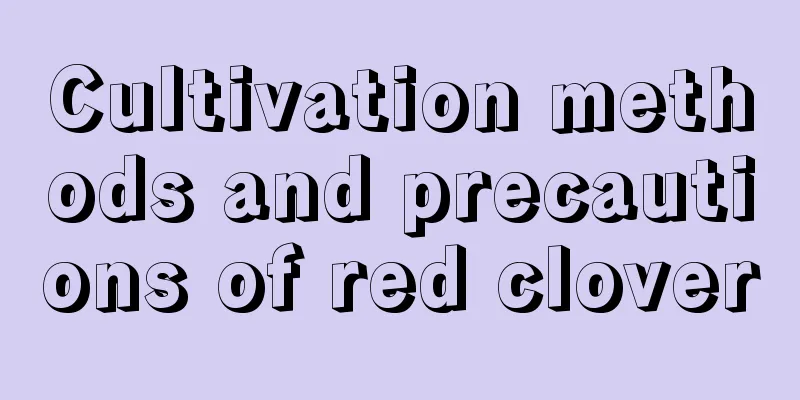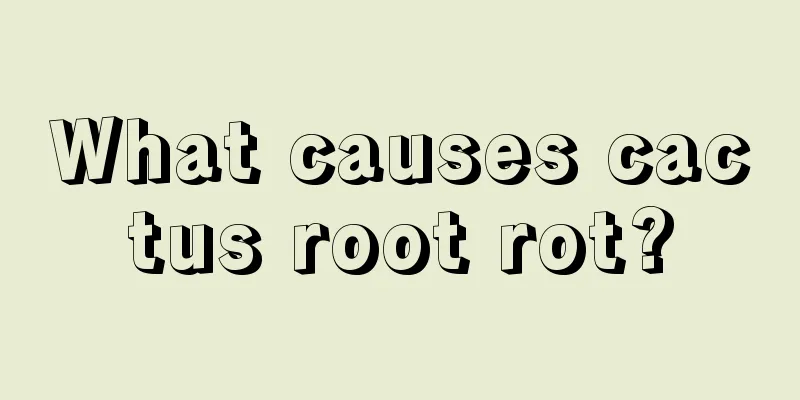Cultivation methods and precautions of red clover

1. Maintenance methods1. Temperature: Red clover prefers coolness, preferably between 15 and 20 degrees. When it is too hot, its growth is hindered to a certain extent. Therefore, when the temperature is higher than 35 degrees, it must be adjusted. Above 40 degrees may even directly lead to its death. It has good cold resistance, but it cannot be lower than minus fifteen degrees Celsius. 2. Light: Red clover is a plant that prefers semi-shade. It is very afraid of strong light. After being exposed to strong light for a long time, its leaves may turn yellow and its flowering may be affected. Therefore, in the case of strong light, be sure to block it slightly. 3. Watering: Red clover has good waterlogging resistance, but poor drought resistance. Therefore, during the growing period, it is necessary to replenish water in time after drying, and spray some water when it is very hot. However, water must also be controlled in winter. 4. Fertilization: Red clover is relatively tolerant to barrenness, so generally speaking, not too much fertilizer is needed. It can be applied only before and after the flowering period. It is generally not necessary to apply it at other times unless the growth is severely hindered. 2. Breeding techniques1. Reproduction: Seeding propagation can be adopted. The fruits are usually collected in autumn and then the seeds are collected. After collection, store it at zero to five degrees. The sowing site can be in a fertile, well-drained area. Both spring and autumn sowing are possible. Before sowing, the seeds can be mixed with fine sand and spread out in a "broadcasting" manner. The thickness of the soil cover can be between two and three centimeters. 2. Pruning: Pruning is mainly aimed at leaves and flowers. The main targets for pruning are dry and yellow leaves. In addition, the flowers also need to be trimmed after the flowering period. 3. Problem diagnosis and treatment1. Diseases: "Viral diseases" are prone to occur in hot and dry seasons, so appropriate amount of water should be added while spraying the pesticide. "White leaf disease" is common in humid conditions and can be controlled with Class A thiophanate. 2. Pests: "Aphids" and other pests are relatively common, and spraying pesticides is relatively effective. IV. Other issues1. Toxicity: It is non-toxic and a good medicinal material. 2. Can it be raised at home? Yes, it has good ornamental value. And its maintenance method is relatively simple. |
<<: Cultivation methods and precautions of Hedinglan
>>: Cultivation methods and precautions of red holly
Recommend
How long does it take for asparagus to grow?
Introduction to Growing Asparagus Asparagus is no...
How to prune the golden jujube tree
When to prune the golden jujube tree It is import...
Olive tree cultivation methods and precautions
1. Soil Olive trees do not have high requirements...
How to prune miniature coconut palms
Miniature Coconut Tree Pruning Time The miniature...
How to propagate the succulent rain heart
1. Planting seeds Among many succulents, except f...
Breeding method of Zephyranthes
1. Loosen the soil When cultivating Zephyranthes,...
How many years has it been since the old persimmon was planted down the mountain?
The results of planting old crow persimmon on the...
How to propagate cedar
Seed propagation of cedar Sowing time Seed propag...
What is the function of cosmos
The ornamental value of cosmos in gardens The cos...
How to grow spinach? How long does it take to grow spinach before it can be eaten?
Spinach is a common green leafy vegetable that is...
Why is the green radish I raised not growing vines? (Why is the green radish I have grown for a year not growing branches?)
What to do if the green radish does not grow vine...
How to make a climbing rose arch (what rose should be used to make an arch and how high should it be)
Can I make a half arch with roses? Of course you ...
How many years does it take for Dogwood to bear fruit?
Dogwood is a deciduous tree or shrub belonging to...
How to breed new jade ornaments and what to pay attention to
The reproduction method of the new jade ornament ...
Soil culture method of hyacinth
1. Selection of bulbs In order to ensure the surv...









